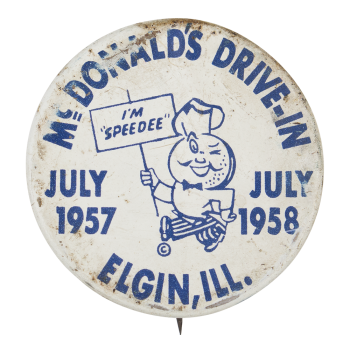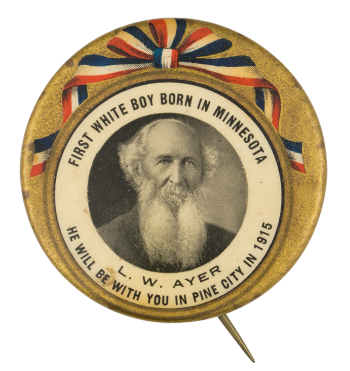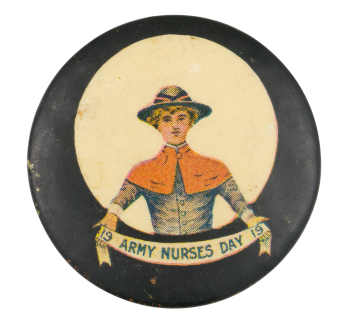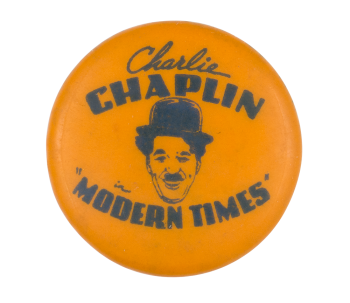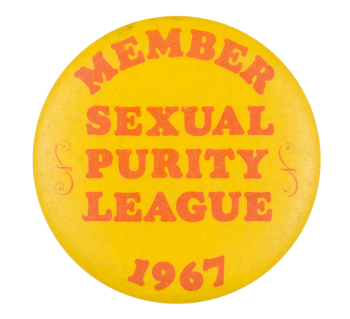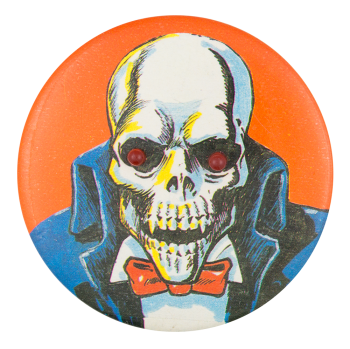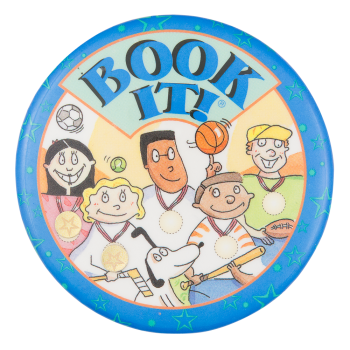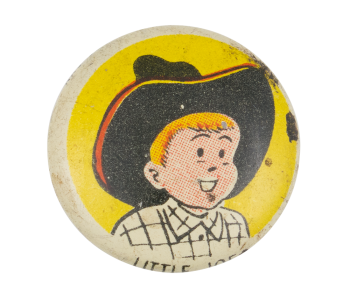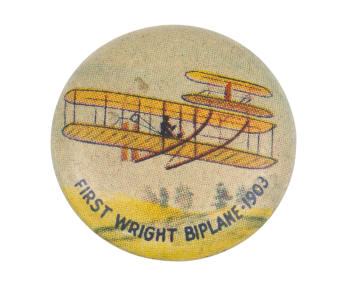Mc Donald's Drive-In
| Category | |
|---|---|
| Additional Images | |
| Sub Categories | |
| Text on Button | MCDONALD'S DRIVE-IN, ILL. JULY 1957 JULY 1958 "I'M SPEEDEE |
| Image Description | Blue text and white background. Illustration of Speedee the Hamburger |
| Curl Text | ACORN BADGE CO. CHICAGO 2, ILL |
| Back Style | |
| The Shape | |
| The Size | |
| Year / Decade Made | |
| The Manufacturer | |
| Additional Information | Beginning in 1955, the McDonald’s Corporation has grown to become the foremost fast-food chain on the planet, currently operating over 36,000 stores across the globe and raking in around $25 billion in profit in 2016 alone. As of 1958, the chain was operating 34 restaurants across the United States and was on a path of rapid growth. McDonald’s quickly became famous for its prompt service and focused menu. It’s first mascot Speedee became the face of the company until the Golden Arches and Ronald McDonald designs were copyrighted in 1962. |
| Sources |
Jaaskelainen, L. (n.d.). Topic: McDonald's. Retrieved March 02, 2018, from https://www.statista.com/topics/1444/mcdonalds/. |
| Catalog ID | EV0439 |

